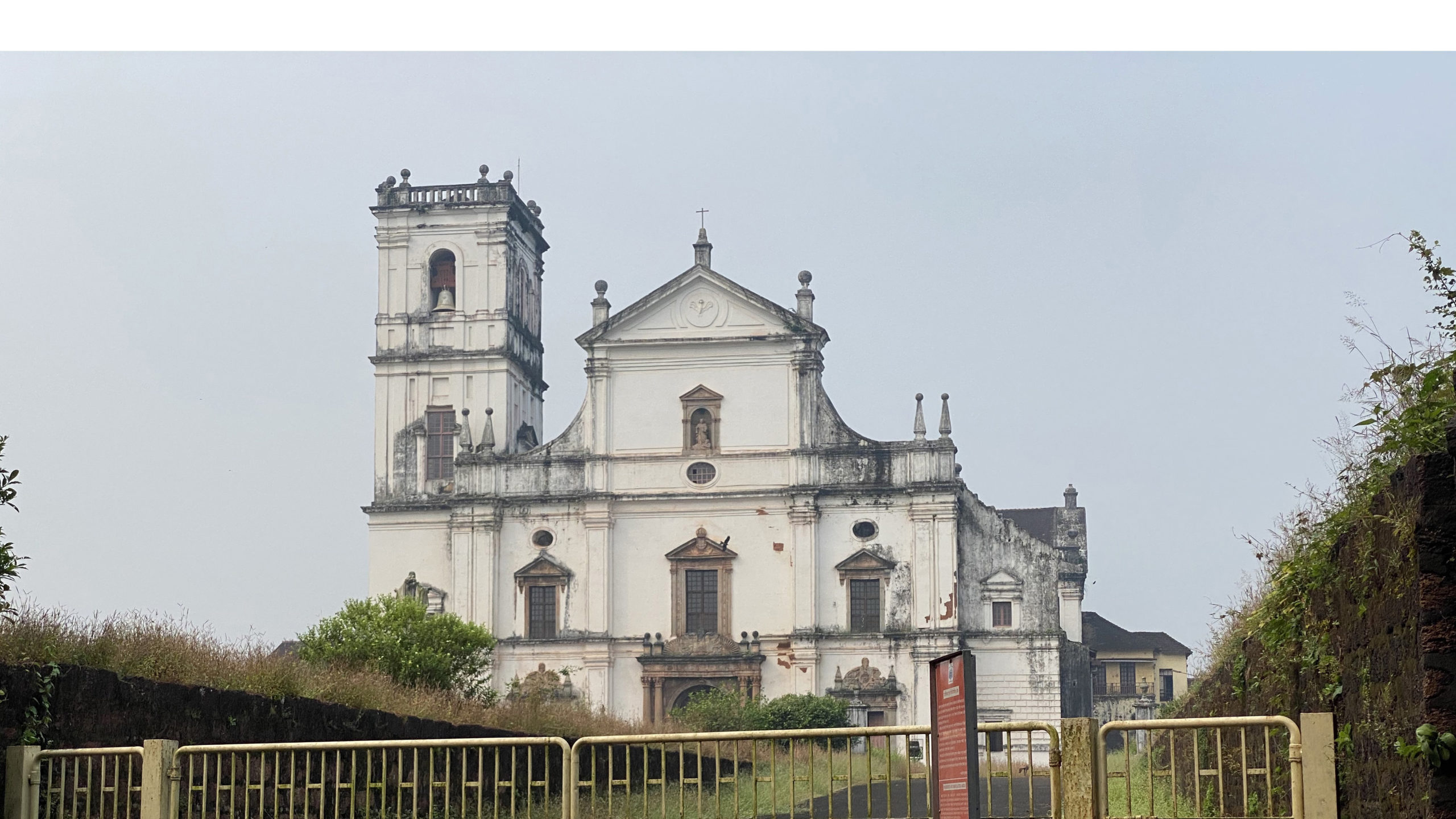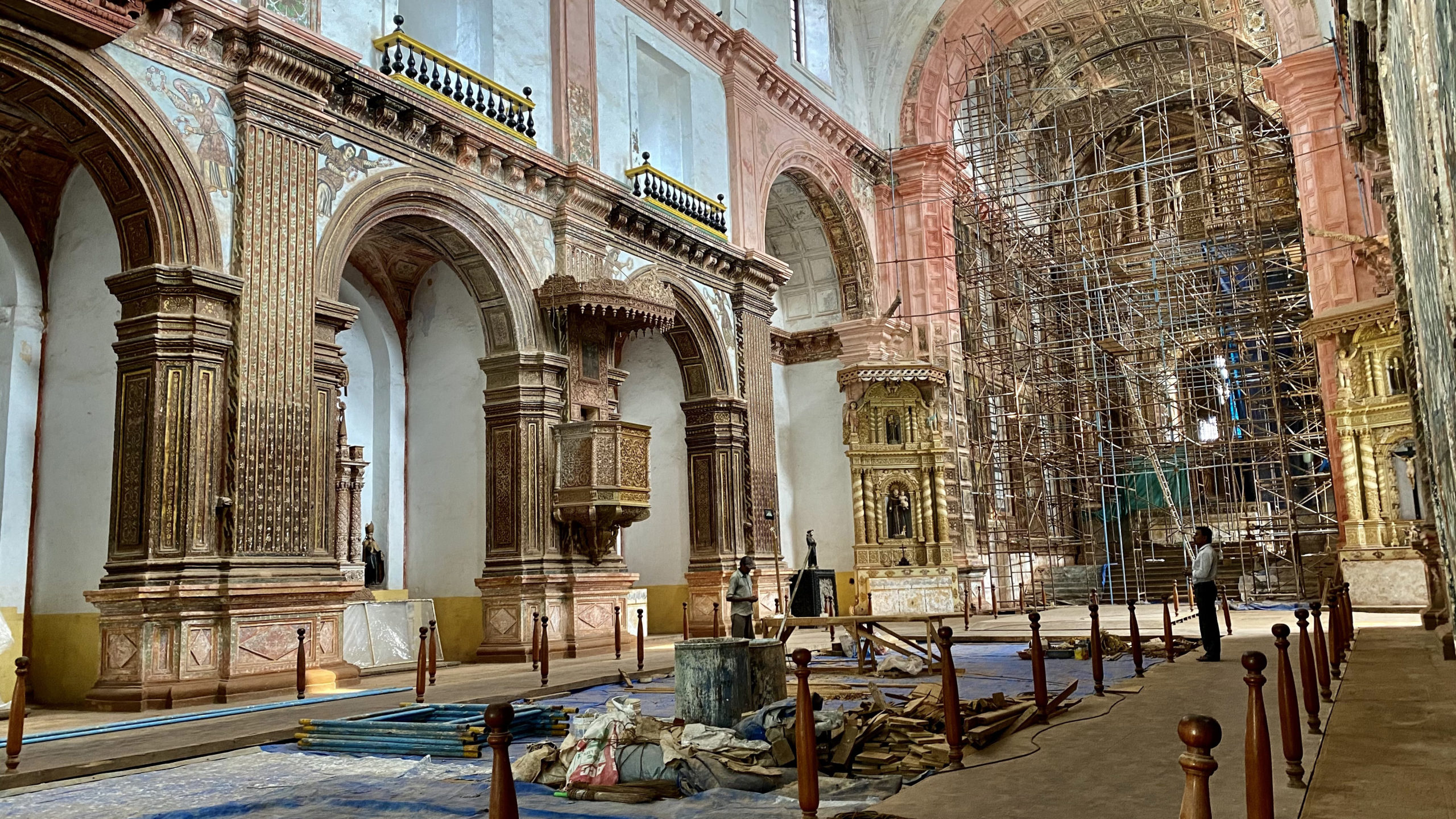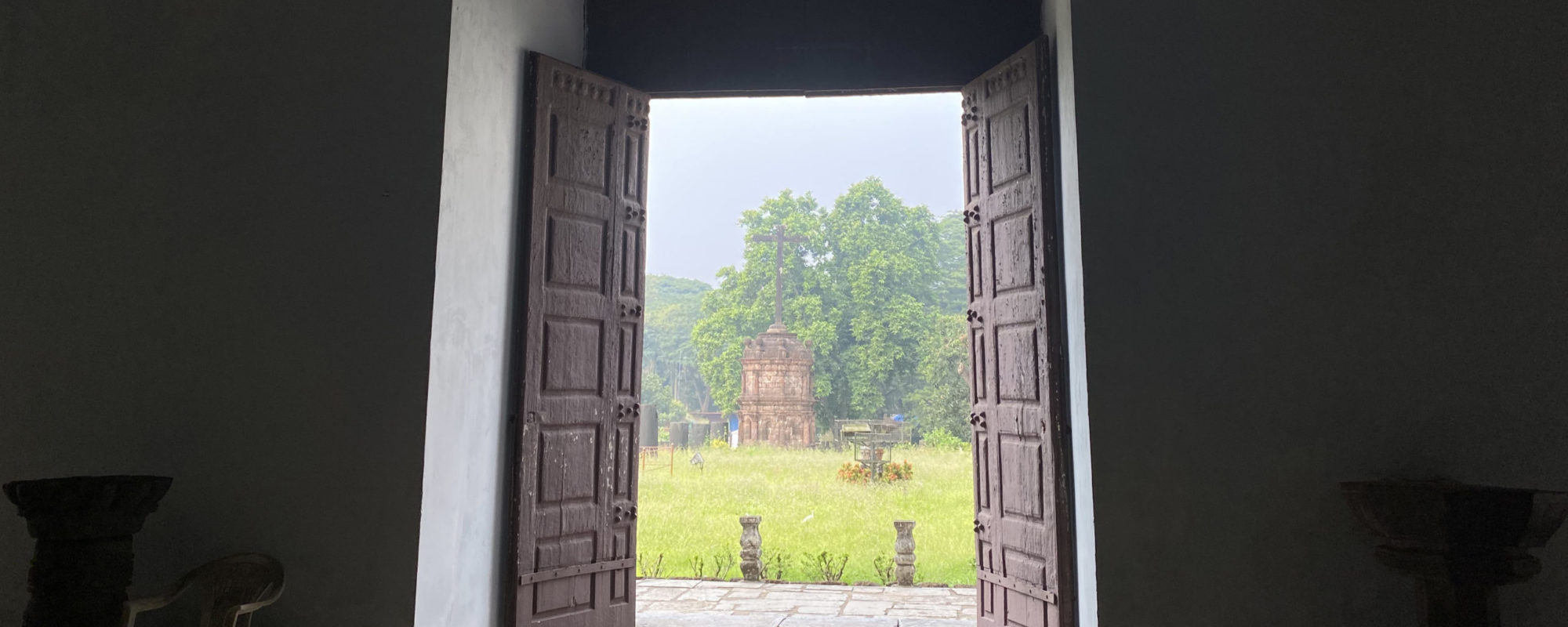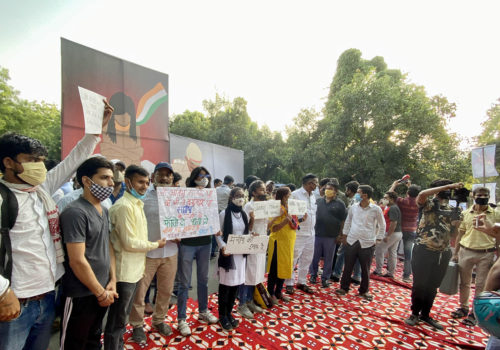GOA VELHA, India — At the crack of dawn on a sunny day last November, I met Mohammad Ameez Baig, a local tour guide, to peruse the Baroque churches of Old Goa, whose architecture originated in 17th-century Europe and are known for their exuberant color and intricate carvings. Standing by the left bank of the Mandovi River, which runs along the old port city and spits out into the Arabian sea, we began at the Viceroy’s Arch, a gateway into what was once the flourishing capital of Portuguese India.
At Sé Cathedral, a Tuscan-style cathedral that is now a UNESCO World Heritage Site, which remains open for Catholic Mass even today, we stood at the east-facing facade and watched attendees line up. Baig—a 24-year-old college graduate with a penchant for travel vlogging and an undying enthusiasm for sharing his encyclopedic local knowledge with others—explained that one of the two towers, now collapsed, was struck by lightning in 1776. But as we walked through the remains, he pointed to the Portuguese remnants inside: Frescoes depicting scenes from the life of Saint Catherine of Alexandria were still carved into the walls, with pink laterite tiles shimmering under the morning skylight.
Starting in 1510, Portugal ruled the Western Indian coastal enclaves of Goa, Damão and Díu under Roman Catholic decree for 450 years, bringing grand architecture, the spice trade and Christianity. Over the centuries, Hindu and Muslim populations chose to either join the Church or give up their lands and move to the northwestern states of Maharashtra and Karnataka. When Portugal ended its local rule in 1961, thousands of Goans, predominantly from the Catholic community who still considered themselves Portuguese, began leaving for Portugal and its African colonies. Those born in Goa until the year of independence, as well as their descendants up to the third generation, became entitled to Portuguese citizenship—and they have made abundant use of that option.
Today, Goa’s connection to Portugal is alive and well. So much, indeed, that Baig told me he would soon be renouncing his Indian citizenship for a Portuguese passport. “Being an Indian today,” said Baig, who was raised in Mumbai but returned here to enroll in college, “it’s always an exciting prospect to know that you can have a different citizenship.”
Much of the region is diverse and is home to Hindus, Catholics and Muslims. For many Goans, communal harmony between the three communities in India’s smallest state has been a matter of pride for decades. “Goa just has its own charm,” said Baig, who is Muslim. With its laid-back culture, bustling nightlife and sunny beaches, it has also become a popular holiday destination in recent years. Local tourism ground to a screeching halt when the Covid-19 pandemic hit India, but since the end of last year, the industry has begun to see a resurgence.

Baig is thrilled to have his customers back, although it hasn’t always been pleasant: The Goa he once knew has evolved into something much more commercial. “It is now the Las Vegas of India,” he said. With hotels, restaurants and stores mushrooming across the region to cater to visitors, the liberal and under-regulated use of drugs and alcohol has also fueled an image of Goa as a party hub. Over the last ten years, Baig has noticed other changes, too—rooted in controversial policies that could have similarly long-lasting implications.
After winning an absolute majority in state elections last year, the ruling Hindu nationalist Bharatiya Janata party (BJP) is mulling plans that could wreak environmental havoc. They include importing 51.6 million tons of coal through Goa for private corporations—for which the government is expanding a national highway, double-tracking an existing railway, and setting up a transmission power line. It will also convert 934 acres of forest land in Goa for industrial use, which means clearing out 40,000 protected trees. The proposed projects have angered many locals, particularly environmental activists, biologists and scientists, who have appealed to the Supreme Court alleging these moves are an attack on the protected wildlife reserves of south Goa.
Amid so many changes, young Goans are looking to Portugal as both an escape and an opportunity. When the Portuguese consulate was first opened here in 1995, around 90 percent of Indian migrants were from the Catholic community, less educated and occupied blue-collar jobs in hospitality and transportation. That dynamic has since shifted, with a new generation of better-educated Goans increasingly leaving their own mark on a country that once colonized them: Portuguese Prime Minister António Luís dos Santos da Costa is the son of fiercely anti-colonial Goan writer Orlando da Costa, while Ivo de Figueiredo is an award-winning Norwegian-Goan biographer and Goa-born Fitz de Souza played a prominent role in Kenya’s independence movement of the 1960s.
Many who claim Portuguese citizenship often look elsewhere to the European Union, using Portugal as a gateway. The UK, for instance, is home to more than 149,000 Goan-Portuguese nationals. Goan migration has always been a part of upward mobility, said Jason Keith Fernandes, an anthropologist at the Lisbon University Institute. “Very often, the intention is not to abandon Goa, but to make money, send it home and then eventually come back.”
That rings true for 29-year-old Brian Carvalho, who was born and raised in Oman, went to college in Mumbai and eventually settled down in Britain in 2015. Despite his circuitous route around the world, his connection to Goa remains strong even today. “Being Goan is something I continually rely on because it’s such a big part of my being.” Carvalho grew up listening to his parents speak Konkani and Portuguese as they mingled with a tight-knit Goan community in Oman. During summers and on Christmas, they would also visit Goa to see friends and family. Eventually, he applied for Portuguese citizenship, even though he has visited Portugal only twice. “Only once you go there do you see the similarities between Goans and the Portuguese,” he said, such as the seaside and the government buildings of Lisbon, which resemble Goa’s Panjim, or when restaurants serve Goan food.

However, Carvalho also says Portuguese don’t have as much of a connection with Goa itself—“not in the way that we Goans may fantasize about being Portuguese.” That could be due to a lack of understanding about Portugal’s role in colonization or simply a reluctance to acknowledge the past, he said.
Yet none of this dampens Baig’s enthusiasm for making the move. In India, he says, one’s success depends largely on factors like class, caste and background. But abroad, “you can at least make a case for your value based purely on your merit.”
Goans born long after the state’s return to India often hear the Portuguese saying, “Quem viu Goa excusa de ver Lisboa.” (“He who has seen Goa need not see Lisbon.”) But many might disagree. Under Portuguese rule in India, they were at least able to influence their fates through negotiation and consultation. Even the churches were “buildings by Goans, designed by Goan architects and masons, including Goan Catholic priests, and in many cases, commissioned by Goan landowners or Goan local communities,” wrote the Portuguese historian Paulo Varela Gomes in his book Whitewash, Red Stone, which examined the history of churches in Goa.
But as Goa transforms under the watchful eyes of the current nationalist government, Fernandes, the anthropologist, says Goans feel they can no longer maintain the kind of cosmopolitan lives they enjoyed earlier. “There’s a sense of being seen as a second-class citizen,” he said. It’s compounded by a restriction in Indian law banning dual citizenship. Once Goans take up Portuguese passports, they can no longer vote in Indian elections.
That may be encouraging young people like Baig to feel they may be more useful elsewhere. “Personally, I feel that if I was a Portuguese citizen,” he said, “I would not feel so sensitive about wanting to change the country from what it is today.”




